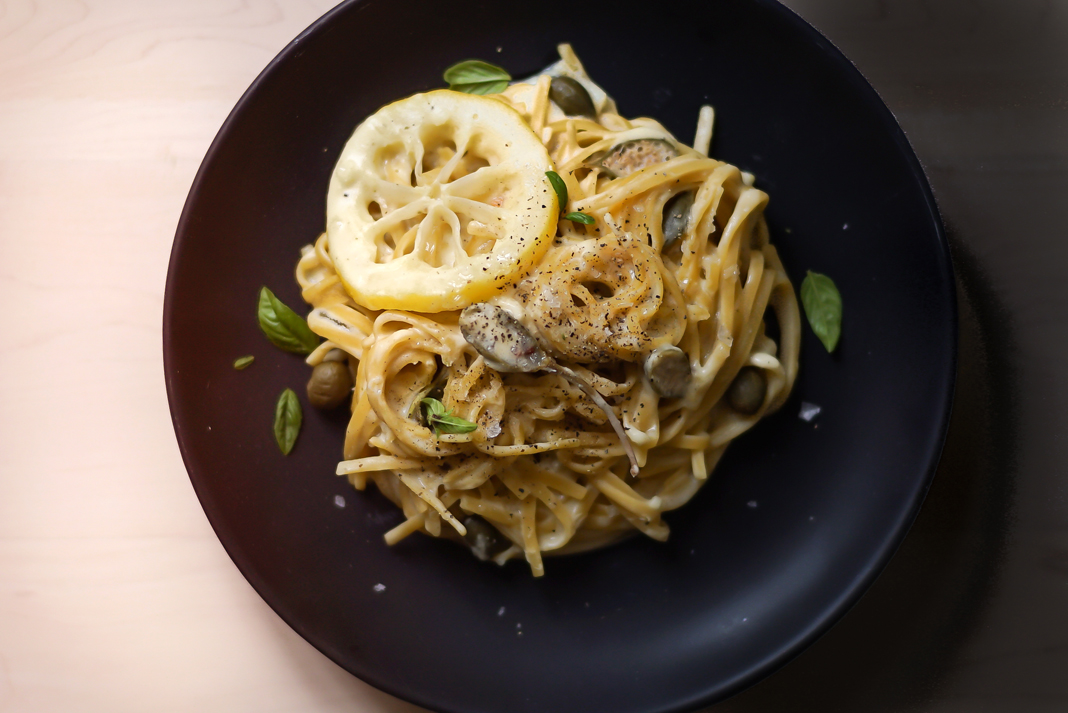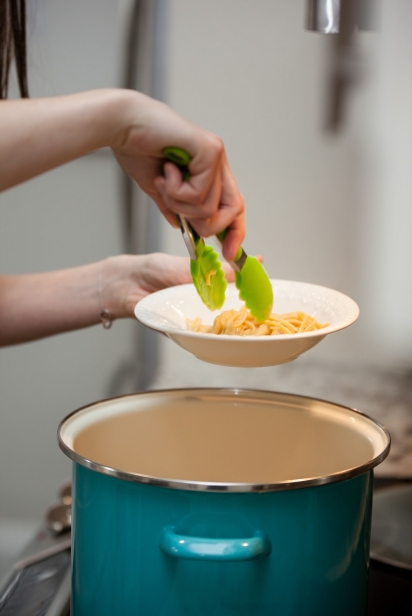Using Her Noodle
There’s something restorative about pasta in the winter; it’s like a promise of comfort in the form of warm noodles. You shut the door behind you after a long day, and leave the cold out there, where it belongs, and get a pot of salted water to boil. Everything will be okay.
But, of course, not everyone can indulge in traditional durum wheat pasta.
There are many reasons for this; Celiac disease causes a severe reaction to gluten, while diabetes can mean that refined carbohydrates are a problem. Other people avoid gluten or refined carbohydrates as a matter of dietary choices, making a warm bowl of creamy fettuccine out of reach. Or worse, it’s a limp nest of gluey rice alternatives masquerading as your favourite pasta shape.
But in recent years, pasta-makers have leaped imagination; they’ve looked beyond grains and homed in on pulses. New varieties of pasta made from lentils, chickpeas, mung beans, soybeans and other legumes are appearing on grocery shelves and not just at the health-food store. Major brands such as the Italian-owned Barilla dry pasta company have been manufacturing orangehued, lentil versions of home cooks’ favourite shapes.
According to data from Pulse Canada, pasta products containing lentils have sharply risen globally (last year, they tracked 87 new products on the world market compared to only one in 2008.) Tanya Der, Pulse Canada's director of food innovation and marketing, notes that in Canada, these products take different tacks in their marketing: some tout their high protein content, while others trumpet their gluten-free or vegan status.
Shelby Taylor is the woman behind a pasta company called Chickapea Pasta, based in Collingwood, Ontario. Her pasta is made with just two ingredients — chickpeas and lentils — making it gluten-free, low in carbohydrates and packed with protein (one 3.5 ounce serving boasts 23 grams of protein, about as much a three-ounce serving of chicken.)
While the gluten-free aspect of her pasta is a draw for certain customers, Taylor’s focus is elsewhere.
“Chickapea is naturally gluten-free because it’s made with just chickpeas and lentils, but the real benefit of the pasta is what it does have in it, rather than what it doesn’t have,” she says, referencing her pasta's high nutritional content. A serving of her pulse pasta contains more fibre than whole-grain durum pasta and is also high in iron, thiamine, Vitamin B and magnesium content, among other nutrients.
Taylor, who used to work in magazines, pivoted to health food as her family grew. She purchased a health-food store in Collingwood, intending to use her day-to-day customer interactions as market research.
She wanted to learn what was missing for the average family that was trying to balance busy lives with healthy eating, to launch a product of her own. She noticed a common complaint from parents that throwing on a pot of pasta on a weeknight is quick and easy and the kids scarf it down, but it comes with a side of parental guilt. “We know it’s not really healthy and sometimes kids don’t even eat the sauce. And then they’re hungry an hour later. And parents feel bad because it’s not a nutritionally dense product. This got me thinking, why can’t pasta be healthier?”
Research led her to chickpeas and experimenting led to incorporating lentil flour to improve the texture. Initially, Taylor worked with restaurant-grade pasta extruders, but as she says, “We very quickly learned these machines not made for high protein or gluten-free flour.”
Today, Chickapea has a partnership with an Italian pasta manufacturer. “They have the most sophisticated process imaginable, they have a much smoother texture and it eats much more like traditional pasta than it ever did before. It has less texture, it cooks easier, and it goes better with all the traditional sauces and ingredients that people are used to eating pasta with,” Taylor says.
And while Chickapea pasta is made in Italy, much of the pulse flour is Canadian, she says.
On a recent trip to the manufacturer, Taylor took stock of just how far she’s come over a few short years — from the days of the messy extruder to this new partnership with Italian experts in dry-pasta production. “You’ve got hundreds of pounds of pasta coming at a time; you have the smell of chickpeas and lentils in the air, these cool machines fill these boxes up while people pack them onto the display palette.” She says the sight of it all makes her tear up.
Bringing that pasta back home to Canada, and sampling it to her toughest crowd — Italian immigrants — is Taylor’s proudest feat. “They’ll insist, ‘no, no, no, I’m Italian, I won’t like it' and nine times out of 10, they are completely shocked and end up walking away with a box.”
Chickapea
chickapea.ca | 1.888.868.9968 | @chickapeapasta
Chickapea's creamy white wine linguine
1 package Chickapea linguine
2 cups low-sodium vegetable broth
2 cups Sauvignon Blanc
½ cup vegan cream cheese
1 tablespoon caper berries, chopped
4 cloves of garlic, minced
1 shallot, minced
1 teaspoon salt
1/8 teaspoon crushed black pepper
1 lemon, juiced
1 tablespoon fresh basil
Flaked sea salt to taste
In a large pot with a lid, add vegetable broth, white wine, cream cheese, caper berries, garlic, shallot and salt. Cover the pot with a lid and bring the mixture to boil on high heat.
Add linguine to the pot, cover with the lid and reduce the temperature to low. Cook for 5 minutes, stirring occasionally. Remove the lid and stir continuously to reduce the sauce for approximately 5 minutes.
When the sauce is a creamy consistency remove from the heat and add the lemon juice, basil and pepper. Serve with a pinch of flaked sea salt.







